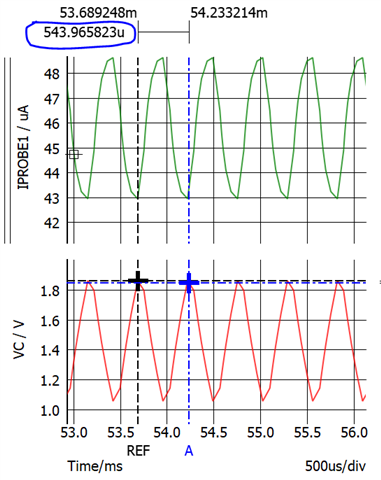Other Parts Discussed in Thread: TLV3201
Hi,
I'm trying to simulate a PFC Dithering circuit based on the SLUA704 document using a UCC28180 and TLV3201. R4 and C1 are designed to get a dither rate of 2kHz. However, using the given resistance and capacitance values of 33kohm and 16.4nF, when simulated I obtain a dither rate of ~1.3kHz instead of the 2kHz I expect. Also, a period of 500us is used for the calculation (from the rate of 2kHz). Should it not be 250us since charging and discharging times are half of the period? Is there anything else that I'm missing?
Thanks



